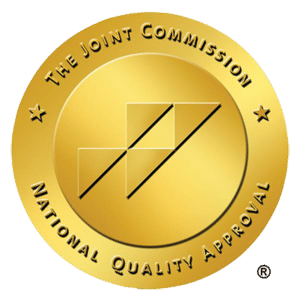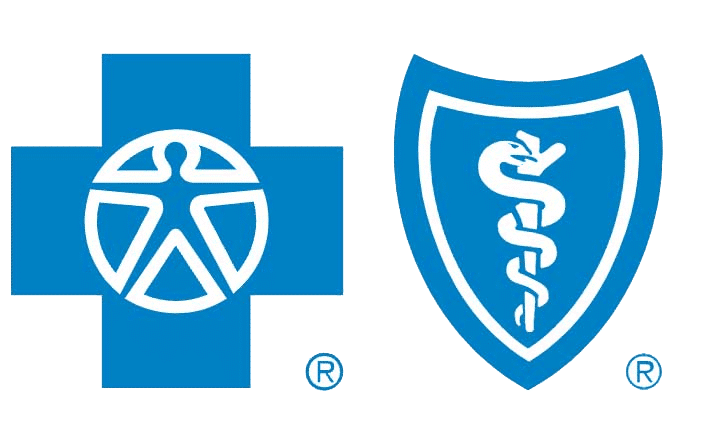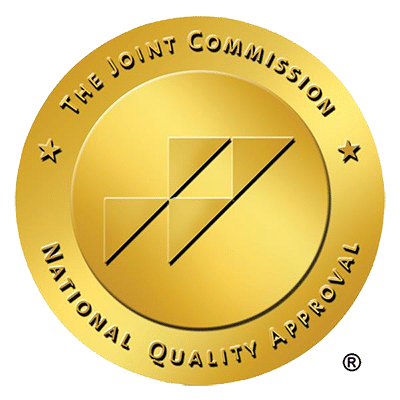With fentanyl addiction in USA escalating, urgent questions arise about the drug’s grip on the nation. Responsible for over 150 deaths each day, fentanyl has ignited a public health crisis of epic proportions. We delve into its lethal reality, the strains on society grappling with its fallout, and the pathways to overcoming addiction.
Key Takeaways
- Fentanyl’s extreme potency is driving a surge in overdose deaths, with fentanyl being 50 to 100 times more potent than morphine and implicated in nearly 70% of drug overdose deaths in the US.
- Fentanyl addiction has far-reaching effects beyond the high, leading to physical dependence with severe withdrawal symptoms and long-term psychological and cognitive impacts.
- Efforts to combat the fentanyl crisis include boosting public awareness, increasing funding for addiction treatment, enhancing law enforcement measures against trafficking, and providing comprehensive treatment options.
The Rising Tide of Fentanyl Overdoses
The narrative of America’s drug landscape has been dramatically rewritten by the emergence of synthetic opioids, with fentanyl leading the charge. This formidable adversary has been implicated in a surge of overdose deaths, calling for an immediate and decisive response. Fentanyl, a synthetic opioid of exceptional potency, has been a game-changer in the opioid epidemic, causing nearly 70% of drug overdose deaths in the US. The lethal prowess of this drug is undisputed, and its role in overdose deaths involving heroin and prescription opioids has painted a grim tableau of the current state of drug abuse.
At the heart of this crisis is fentanyl’s staggering potency. This synthetic opioid is 50 to 100 times more potent than morphine, rendering it a leading cause of overdose deaths and a linchpin in the opioid crisis. The drug overdose death rates have risen sharply, with fentanyl overdoses doubling in just three years. Fentanyl addiction has become a public health quandary, challenging the very fabric of communities across the nation.
Fentanyl’s influence extends beyond individual addiction, affecting entire systems. Illicitly manufactured fentanyl has become a cornerstone in the portfolios of drug cartels, with fentanyl trafficking now a significant concern for law enforcement. The presence of fentanyl analogs and other synthetic opioids in the illicit drug market poses a hidden danger that exacerbates the fentanyl crisis. In this complex web of drug addiction, fentanyl facts have become a critical tool in understanding and addressing the epidemic.
Understanding the mechanics of fentanyl affect is vital. The drug’s potency means that it can cause:
- slowed or stopped breathing
- hypoxia
- coma
- permanent brain damage
- death
It is a stark reminder that in the realm of synthetic opioids, fentanyl is a merciless executioner, its shadow looming large over the nation’s ongoing battle with drug overdoses.
The Lethal Dose: How Little It Takes
The concept of a lethal dose is often associated with large quantities of a substance, but when it comes to fentanyl, the reality is chillingly different. A mere two milligrams of fentanyl can be lethal, a quantity so small it defies visual comprehension. This potentially lethal dose can vary based on individual factors such as body size, tolerance, and previous drug use, but the margin for error is perilously thin.
The dangers of illicit drugs are magnified when considering the unpredictability of illicit fentanyl tablets. Some of these counterfeit pills harbor more than double the lethal dose. Astonishingly, 42% of pills tested for fentanyl contained at least 2 mg of the substance, underscoring the hazardous game of Russian roulette that users unknowingly play with each pill.
With one kilogram of fentanyl possessing the grim potential to cause half a million fatalities, the risk of overdose deaths becomes a haunting specter over every transaction of illegal drugs.
Illicitly Manufactured Fentanyl: The Hidden Danger
The insidious nature of illicitly manufactured fentanyl lies in its chameleon-like ability to assume various forms. Whether in powder or liquid form, fentanyl’s presence in the illegal drug market is often clandestine and always dangerous. Liquid fentanyl may find its way into everyday items like nasal sprays and eye drops, or even be distributed on paper or candies, transforming the mundane into potential vectors of addiction and overdose.
The Drug Enforcement Administration (DEA) has raised alarms over the increasing potency of fentanyl pills, with a significant number containing doses that could be fatal. The threat of overdose deaths is not confined to fentanyl alone; it often involves heroin and other synthetic opioids, creating a tapestry of peril where fake prescription pills and other illicit narcotics are laced with this high-potency killer.
The opioid crisis is further fueled by the fentanyl trafficking operations of drug cartels, which continue to flood the streets with this lethal weapon masquerading as prescription drugs.
Want to Learn More about Fentanyl Addiction?
Our addiction recovery team is here 24/7 to answer your questions or to get you help.
Fentanyl’s Impact on Mental Health and Addiction
The repercussions of fentanyl abuse extend beyond the immediate threat of overdose; they entrench themselves deeply within the mind and soul of the user. The synthetic opioid’s affinity for opioid receptors in the brain triggers a cascade of dependency and mental health issues, laying the groundwork for a long and arduous battle with addiction. The chemical allure of fentanyl is such that the brain’s reward pathways are hijacked, eroding the capacity to derive pleasure from other aspects of life.
Fentanyl addiction is characterized by:
- a relentless drive to seek and consume the drug, regardless of the detrimental consequences it unleashes
- the promise of euphoria being chased by the specter of withdrawal and the relentless pull of cravings
- a cycle that is not just a physiological phenomenon but a mental crucible that can lead to depression, anxiety, and even suicidal thoughts.
The journey through addiction is often marked by attempts to break free, each thwarted by the body’s clamor for the drug. Withdrawal symptoms can be severe, creating a significant barrier to recovery and underscoring the need for comprehensive treatment and support systems. The ripple effects of fentanyl’s impact on mental health are profound, contributing to a growing public health crisis that demands attention and action.
The Chemistry of Dependency
The siren call of fentanyl lies in its chemical structure, which binds to mu-opioid receptors in the brain with an affinity far surpassing that of heroin. This bond is the genesis of addiction, setting in motion a chain reaction where the user’s tolerance to the drug’s effects builds with each encounter, leading to an insatiable need for higher doses. The result is a state of physical dependence where the absence of fentanyl signals the onset of withdrawal, a tumultuous period marked by:
- Physical and emotional upheaval
- Flu-like symptoms
- Muscle and bone pain
- Insomnia
- Anxiety and depression
- Nausea and vomiting
- Diarrhea
- Cold flashes and goosebumps
- Intense cravings
It is important to seek professional help and support when dealing with fentanyl addiction and withdrawal.
As the user becomes ensnared in the web of drug addiction, the realities of substance use disorder take hold. The body’s increasing resistance to the effects of fentanyl necessitates ever-increasing doses to achieve the desired high, further entrenching the cycle of dependency. This relentless pursuit of a fleeting euphoria comes at a grave cost, with the potential for overdose deaths lurking ominously with each use.
Beyond the High: Long-Term Consequences
While the high from fentanyl may be fleeting, the long-term effects on cognitive function can be enduring and debilitating. The drug’s interaction with brain regions responsible for pain and emotion regulation can lead to cognitive impairments that outlast the drug’s immediate effects. Beyond the realm of severe pain relief, fentanyl’s legacy may include a compromised ability to think, remember, and process emotions.
The mental toll of chronic fentanyl use is not to be underestimated. Increased anxiety-like behavior is just one manifestation of the psychological turmoil experienced during withdrawal phases. As individuals struggle to reclaim their minds and lives from the grips of addiction, it becomes clear that the battle against fentanyl is not only about overcoming a physical dependence but also about healing a wounded psyche.

Identifying Fentanyl in Illicit Drugs
The stealthy nature of fentanyl, often mixed with drugs like heroin and cocaine, poses a significant challenge in preventing overdose deaths. Users may be unaware of its presence, increasing the risk of accidental overdoses. With no discernible way to detect fentanyl by sight, taste, or smell, the reliance on specialized test strips becomes a crucial tool in the arsenal of overdose prevention. These strips, although not foolproof, offer a glimmer of hope in the murky waters of illicit narcotics.
The sobering statistics from the Drug Enforcement Administration reveal that a staggering 60% of pills laced with fentanyl contained a potentially lethal dose. This highlights the critical importance of detection methods, like fentanyl test strips, which can provide results in about 5 minutes and potentially save lives. In the fight against fentanyl overdoses, the ability to identify the hidden enemy within common drugs involved in the opioid crisis is a vital step toward safeguarding public health.
Drug Enforcement Administration’s Role
The DEA is on the front lines of the battle against fentanyl trafficking, taking aim at the Sinaloa and Jalisco cartels, which are major players in funneling this synthetic opioid into the United States. Through the establishment of specialized Counter Threat Teams and leveraging a global intelligence network, the DEA is working to dismantle the cartels’ operations and their financial infrastructures. The agency’s multifaceted approach includes legal actions against Chinese chemical manufacturers and the extradition of key cartel figures.
In addition to targeting the supply chain, the DEA’s strategy extends to enhancing border security and inspection technology. The implementation of Non-Intrusive Inspection Systems at points of entry is a testament to the administration’s commitment to improving fentanyl detection and halting its flow into the country. These concerted efforts are essential in the broader drug policy aimed at addressing the fentanyl crisis and its devastating impact on communities.
Strategies for Combating the Fentanyl Crisis
The United States is combating the fentanyl crisis on multiple fronts, with international cooperation playing a pivotal role. Under President Biden’s leadership, the nation has recommenced narcotics control cooperation with China and established a dedicated counter-narcotics working group, signaling a renewed commitment to reducing the influx of illicit fentanyl and its precursors. The Global Coalition to Address Synthetic Drug Threats is an embodiment of this international effort, bringing together over 100 countries to combat the production and trafficking of synthetic opioids.
Public health initiatives are also at the forefront of the strategy to stem the tide of fentanyl overdoses. The CDC’s Stop Overdose campaign is a prime example, aiming to educate the public about the dangers of illicitly manufactured fentanyl and promoting the use of life-saving medications like naloxone. These campaigns are complemented by the Biden administration’s proposal for a $26 billion budget dedicated to breaking down barriers to treatment services, reflecting a strong commitment to addressing the opioid crisis through increased funding for addiction treatment access and public health programs.
Rural Communities: A Closer Look
Rural communities often face unique and substantial obstacles in the fight against opioid addiction. Some of these obstacles include:
- Limited access to treatment facilities
- Dearth of healthcare professionals capable of administering medication-assisted treatment
- Emergence of substances like xylazine, an animal tranquilizer now appearing alongside opioids such as fentanyl
These factors exacerbate the drug crisis in these areas and underscore the complexity of the drug issues plaguing rural regions.
Recognizing these challenges, the U.S. Department of Health and Human Services has taken steps to provide relief. Through the Health Resources and Services Administration, $10 million has been allocated to establish new opioid treatment access points, offering a lifeline to rural communities grappling with the fentanyl crisis. This investment is a crucial component of a broader strategy to ensure that individuals in rural areas are not left behind as the nation confronts the opioid epidemic.
Treatment Options for Fentanyl Addiction
Treatment often involves medication-assisted therapy (MAT), which combines medications with counseling and behavioral therapies to provide a comprehensive support system for recovery. Among the array of treatment options, MAT stands out for its efficacy, particularly in reducing cravings and withdrawal symptoms that can be barriers to overcoming fentanyl addiction.
Medications like methadone and buprenorphine, which are opioid analgesics, are cornerstones of MAT, offering a more manageable pathway through withdrawal by engaging with opioid receptors, yet without inducing the euphoric high associated with fentanyl. On the other hand, naltrexone serves as a blockade, preventing opioids from attaching to receptors and thus inhibiting the pleasurable and sedative effects of substances like fentanyl. The integration of these medications with behavioral therapies, such as cognitive-behavioral therapy, contingency management, and motivational interviewing, can significantly enhance the prospects of successful recovery from fentanyl addiction.
Topsail’s Comprehensive Care Approach
Topsail, nestled in the tranquil town of North Andover, Massachusetts, embodies a sanctuary for those battling fentanyl addiction. With a spectrum of programs tailored to meet the varied needs of its clients, Topsail’s Full Day Program offers an intensive, full-day care regimen five days a week, ideal for those facing severe addiction challenges. The Half Day Program, or IOP, provides a structured environment for individuals transitioning back into their daily lives while still receiving support for substance abuse issues.
Topsail’s comprehensive care approach is a testament to our commitment to treat patients with personalized, effective strategies that cater to the unique circumstances of each individual seeking freedom from the clutches of fentanyl. If you are looking for help for a fentanyl addiction treatment in MA contact us today!
Support Systems and Resources
A robust support system is pivotal for individuals embarking on the journey of recovery from fentanyl addiction. Naloxone, an opioid antagonist, has become an indispensable tool in reversing the effects of an overdose, offering a second chance at life for many. This medication is a cornerstone of harm reduction strategies that not only save lives but also serve as a gateway to further treatment and support. Comprehensive syringe services programs exemplify evidence-based harm reduction, providing safer injection practices and access to essential health and social services.
Furthermore, the Substance Abuse and Mental Health Services Administration (SAMHSA) plays an instrumental role in supporting those affected by addiction through its Harm Reduction Grants program and National Helpline. The helpline operates around the clock, offering confidential referrals to treatment facilities and support groups in both English and Spanish. These resources, along with community-based initiatives, form a safety net that can catch individuals before they fall deeper into the chasm of drug abuse.
Navigating the Legal Landscape
The legal repercussions of fentanyl possession and distribution are severe and vary widely across jurisdictions. In Texas, for instance, fentanyl is categorized under the most severe penalty group for controlled substances, reflecting the gravity with which the law views this drug. Even possessing small quantities of fentanyl can lead to state jail felony charges, with the stakes rising exponentially with the amount involved.
Larger quantities can escalate charges to second-degree or first-degree felonies, carrying the potential for lengthy prison sentences and substantial fines. It’s a stark reminder of the high stakes involved, not just in terms of health but also in the eyes of the law.
In conclusion, the fentanyl crisis in the USA is a many-headed hydra, with each head representing a complex challenge—from the rising tide of overdoses to the profound impact on mental health and the formidable barriers to treatment. Yet, within this landscape of adversity, there is a path to hope and recovery. Facilities like Topsail offer comprehensive care and support, while public health campaigns and law enforcement play critical roles in combating the crisis. It’s a fight that requires persistence, innovation, and compassion, but it’s a fight that can and must be won.
Frequently Asked Questions
What makes fentanyl so dangerous?
Fentanyl is extremely dangerous due to its high potency, being 50 to 100 times more potent than morphine, which leads to a high risk of overdose even with small amounts.
Can fentanyl addiction be treated?
Yes, fentanyl addiction can be effectively treated through a combination of medication-assisted therapy (MAT) and counseling and behavioral therapies.
How does Topsail support individuals with fentanyl addiction?
Topsail supports individuals with fentanyl addiction through a range of tailored programs, including Full Day, Half Day, and Outpatient Programs. These are designed to meet the needs of individuals at different stages of their recovery journey.
Is there any way to detect fentanyl in illicit drugs?
Yes, specialized fentanyl test strips can be used to detect fentanyl in illicit drugs, but they may not detect all fentanyl analogues. Using these strips is crucial for overdose prevention.
What legal consequences can one face for possessing fentanyl?
Possessing fentanyl can lead to severe legal consequences, ranging from state jail felony charges to first-degree felonies, depending on the amount and jurisdiction, potentially resulting in long prison sentences and fines. Be aware of the serious implications.
Related Posts

Your Comprehensive Guide on How to Stop Fentanyl Addiction
Wondering how to stop fentanyl addiction? You’re not alone. Fentanyl is a highly addictive opioid, and breaking free requires clear, actionable steps and resilient support.

The Stages of Crack Addiction: Understanding the Progression
Are you trying to understand the stages of crack addiction? This article outlines the progression from initial experimentation to the devastating impact of full-blown addiction.

The Signs of Crack Addiction: Key Symptoms to Watch For
Spotting the signs of crack addiction early can be lifesaving. Rapid weight loss, behavioral shifts, and psychological disturbances are warning signals. This guide directly addresses

Managing Crack Addiction Withdrawal: Symptoms & Timelines
What does crack addiction withdrawal really look like and how can you manage it? When confronting withdrawal, it’s crucial to grasp the intensity of symptoms,

How to Treat Marijuana Addiction Effectively: Beat The Habit
Seeking how to treat marijuana addiction? This straightforward guide outlines step-by-step methods to break free from marijuana’s grip. Simplifying the science, we address the core

A Step-by-Step Guide on How to Overcome Crack Addiction
Navigating the turbulent waters of crack addiction recovery may seem daunting, but you’re not alone. In learning how to overcome crack addiction, knowing what to















